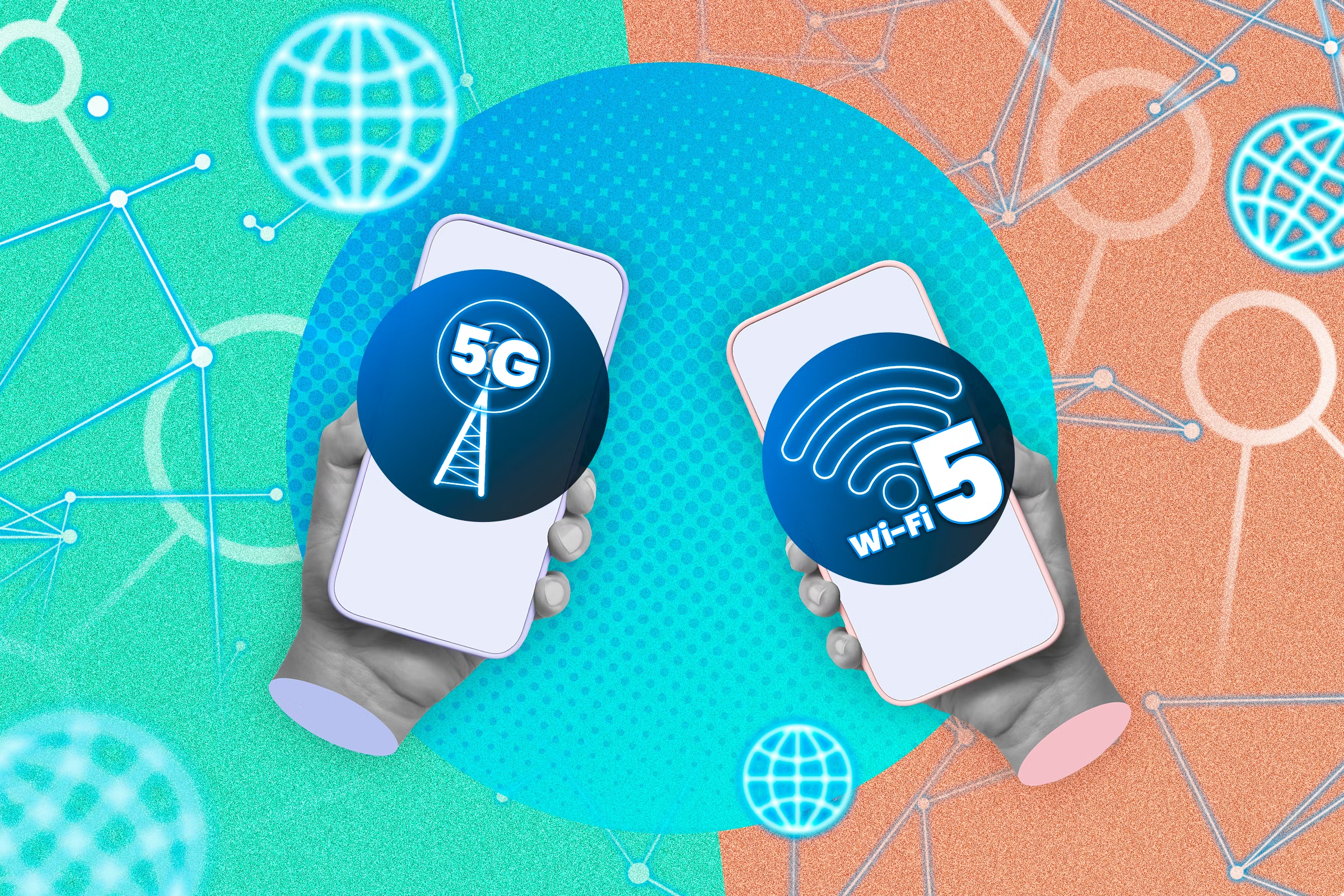Quick Links
-
5G Home Internet Vs. Wi-Fi 5
As our lives grow more intertwined with the internet, terms like “Wi-Fi 5” and “5G” have become commonplace. Despite their frequent use, you wouldn’t be alone in feeling unsure about what these terms indicate beyond the ability to connect to the internet wirelessly.
Mobile Data Vs. Wi-Fi
Both mobile data and Wi-Fi use radio waves to connect compatible devices to the internet. There are, however, many differences between the two in terms of how they operate and their abilities.
Cellular service providers like Verizon, T-Mobile, and AT&T in the US use large cell tower networks to transmit mobile data to cell phones, smart accessories, and other mobile devices nationwide. Because this is an encrypted connection, mobile data is considered safer than Wi-Fi.
To utilize Wi-Fi, internet service providers use a modem to create a wired network within a specified building, such as your home or local library. A connected router is then used to transmit the signal from the modem to compatible devices wirelessly. Modem and router technology may also be combined in a single device for ease of use.
What is 5G?
5G is the 5th generation of wireless cellular network technology since its debut in the early 1980s. 5G uses the millimeter wave (mmWave) spectrum in conjunction with the mid- and low-band spectrums used by its predecessor, 4G.
Using mmWaves is great for achieving higher speeds and lower latency than previously capable. While 4G tops out at 50Mbps in a real-world scenario, 5G reaches download speeds between 50Mbps and over 3Gbps.
In addition to speed and latency improvements, 5G is also more efficient and can handle more devices simultaneously. Because of these improvements, cellular service providers have begun offering 5G home internet as an alternative to fiber optic and cable.
The setback to 5G technology is that mmWaves are highly susceptible to interference. To combat this, telecommunication companies use miniature base stations called “small cells,” Massive MIMOs (Multiple-Input, Multiple-Output), and beamforming to boost and direct the wireless signal.
What is Wi-Fi 5?
Wi-Fi 5, also known by its IEEE standard 802.11ac, is the 6th generation of Wi-Fi since the initial version released in the late 1990s, informally referred to as Wi-Fi Legacy or Wi-Fi 0. Wi-Fi 5 is also the second generation of wireless internet technology capable of utilizing both 2.4GHz and 5GHz frequencies.
Despite using the same frequencies, Wi-Fi 5 is much faster than Wi-Fi 4 and with lower latency. Wi-Fi 5 boasts theoretical speeds of up to 1,300Mbps, over twice the speed of Wi-Fi 4, which only has a theoretical top speed of 600Mbps. Actual speeds will depend on several factors, including what hardware you use and your geographical location. Wi-Fi 5 also introduced multiple-User MIMO (MU-MIMO) support as opposed to the single-User MIMO (SU-MIMO) technology of Wi-Fi 4.
5G Home Internet Vs. Wi-Fi 5
5G routers use very different technology than Wi-Fi 5 modems and routers, so you won’t be able to switch between the two at will. As previously mentioned, Wi-Fi modems are wired and use either external or integrated routers to connect your devices to the internet wirelessly.
5G routers, on the other hand, have a built-in modem that captures the 5G signal sent from cell towers and broadcasts it through your home or business. This is why Wi-Fi is supplied through your internet service provider while 5G home internet is distributed through your cellular service provider.
It’s also important to note that the most recent Wi-Fi iteration is Wi-Fi 7, which reduces interference problems, has the latest security protocols, and introduces new technology. Wi-Fi 7 also advertises drastically improved speeds with a theoretical limit of 46Gbps, making it faster than Wi-Fi 5 and 5G.
That said, Wi-Fi 5 is still the standard, and while you can use Wi-Fi 5, 6, and 6E devices on a Wi-Fi 7 network, you won’t get all the benefits promised.
Source link
